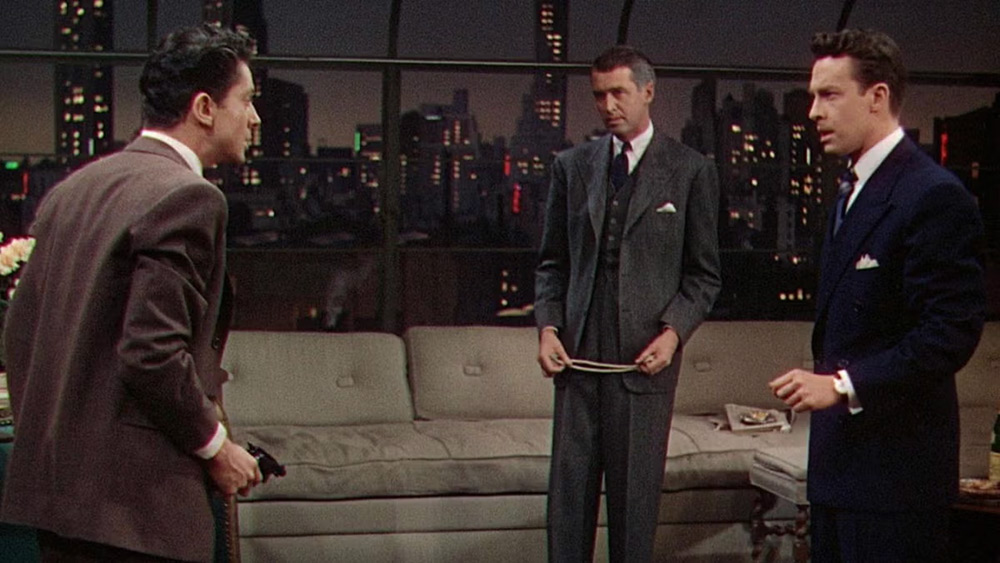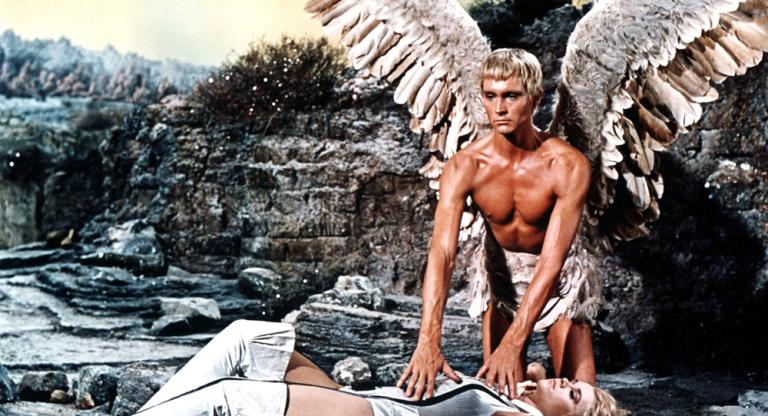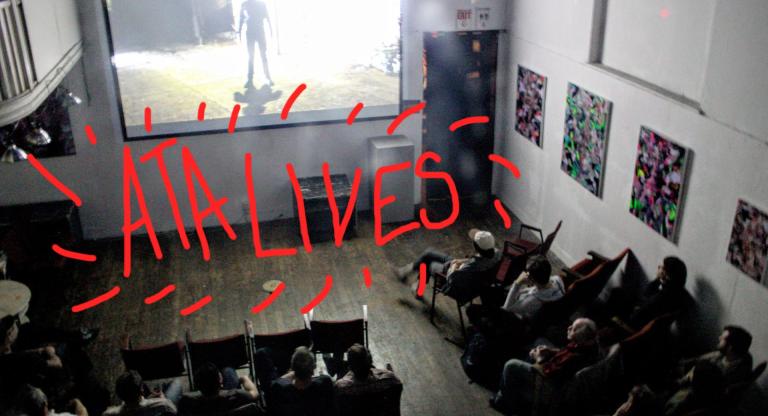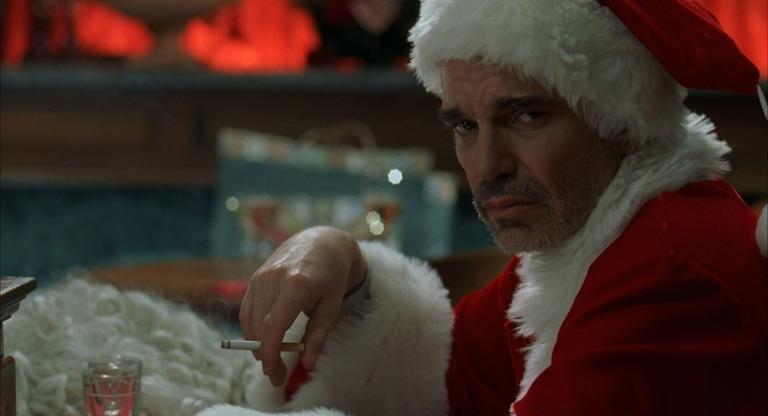Alfred Hitchcock’s Rope (1948) is a sturdy, slender length of film—80 minutes, or 7,200 feet, in all—comprising several braided strands. These pull taut or go slack with such synthetic elasticity as to suggest a miracle product of the modern world. The sun is setting on the Manhattan skyline, its Technicolor reds and pinks dyeing the fiberglass clouds pinned behind the blinking, smoking scale model. The camera is gliding around the set, framing various scenes in real time, stringing its reels together in the momentary darkness of a man’s turned back for the semblance of a single shot. A dinner party is being given, the usual chatter apportioned, with special attention paid to the film stars of the day and their astrological signs—including Cary Grant and Ingrid Bergman in Hitchock’s own Notorious (1946), though the guests cannot remember its name. Beneath the froth, former lovers Janet (Joan Chandler) and Kenneth (Douglas Dick) are reconciling over a mutual antipathy for the host who has reunited them for sport. Throughout, Brandon (John Dall) and Phillip (Farley Granger) are responding individually to the burden of a shared secret (not their queer romance, which is a secret only from the censor board). And Rupert Cadell (James Stewart) is developing a nagging suspicion that those two, his former prep-school charges, have taken too much to heart his gasbag lectures on the Nietzschean superman and may have even acted on the theory.
In his first foray into color, Hitchcock embeds within the Victorian drawing-room drama the trappings of film noir (the snub-nosed pistol, the neon lights, the doppelgängers), transported to the cosseted world of the high-society penthouse: a dead body at center stage in a large Italian cassone trunk, the murder weapon tied around a stack of rare books. It is also the first film the director made under the aegis of his own production company, Transatlantic Pictures, after completing a seven-film contract for David O. Selznick. Here he is gearing up for the following year’s Under Capricorn with a mid-budget quickie that nonetheless stands among his most formally audacious works.
The plot, from Patrick Hamilton’s 1929 play, is based loosely on the story of Leopold and Loeb, university students who in 1924 murdered a fourteen-year-old neighbor boy to demonstrate their capacity to commit a “perfect crime.” In that case and this fictive one, the crimes are hardly perfect. Where Leopold’s telltale eyeglasses were found next to their victim’s body, here it is the guest list that spells the undoing of our would-be Übermenschen. Leopold and Loeb were given life sentences for their murder, and an additional 99 years for the kidnapping that preceded it, saved from the noose by their defense attorney, whose eight-hour closing argument connected the depravation of their crime with the state of their society, which had “learned how cheap human life was” in the trenches of the First World War. In his closing monologue, having ensured the execution of his wayward disciples, Rupert finally throws his lot in with that society, consummating with righteous indignation and evident relish his lifelong pursuit of the perfect crime, committed with impunity by a superior being.
Rope screens tonight, June 2, at the Paris Theater on 35mm as part of the series “HITCH! The Original Cinema Influencer”



